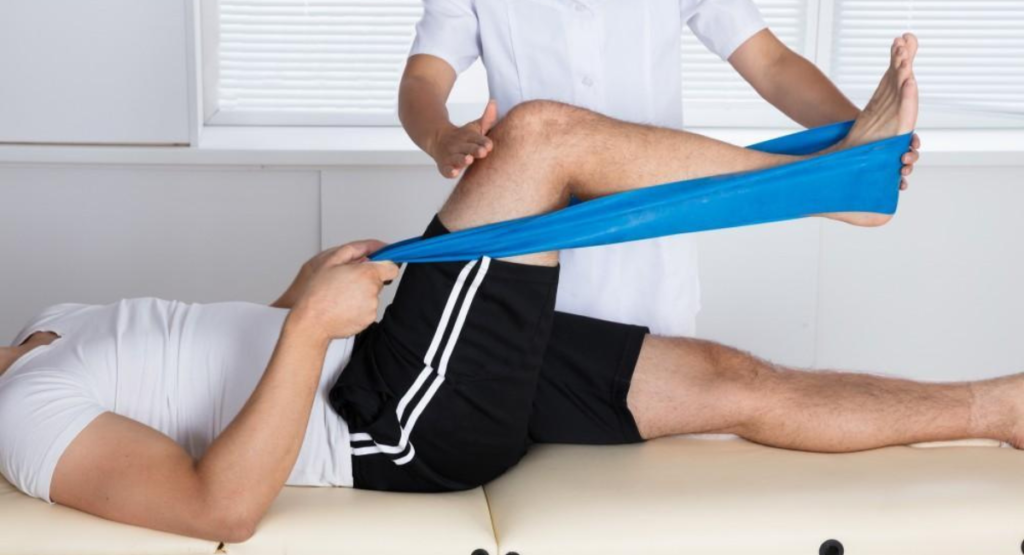The surgical procedure we are going to discuss is total hip arthroplasty or, more commonly, total hip replacement (THR) which is helpful for patients with severe hip pain and stiffness. But for a complete recovery, the fight does not stop in the operating room. This is why a well-coordinated physiotherapy proves very helpful in building up strength, flexibility and usability of the joint in the hip region. On at Sukino Healthcare, we also value the process of creating specific rehabilitation programs according to the patients’ needs. In this article it will be discussed as to what factors should be considered when constructing the exercise programs for their modular total hip replacement physiotherapy and describing seven exercises that will be helpful in recovery and mobility after the surgery.
Best 7 Exercises Total Hip Replacement
1. Gentle Range of Motion (ROM) Exercises:
In the early stages of recovery, it is critical to recommend active, passive, and assisted ROM to enhance the pliability of the hip joint, so that patients do not develop stiffness. They include ersatz exercises like ankle pumps, knee lifts, heel slides and the likes that are carried out in a controlled manner. It’s slowly introducing a patient to exercises related to the affected joint, meaning that a patient will gradually regain mobility without necessarily suffering from pain or stressing his or her joints.
2. Quadriceps Strengthening:
Discovery of key hip muscle- quadriceps showed their importance for hip joint stability and functional movements such as walking or standing. When focused on the quadriceps after hip replacement surgery these movements and postures like; straight leg raises and quad sets can be chosen since they do not exert pressure or stress the hip joint. While performing the above-discussed exercises as part of their physiotherapy, patients can experience increased muscle tension and better joint position stability.
3. Hip Abduction/Adduction Exercises:
Hip abductor and adductor movements aim to assist in part of the muscles that aids in the movement of the leg in the lateral and medial plane. Some of the side leg raises, and the seated hip adduction presses all assist in enhancing the strength and stabilities of the hip muscles. In this context, the patients can build up strength in these muscles which will improve their capacity to walk, climb stairs and even get in and out of chairs.
4. Gluteal Strengthening:
The gluteal muscles are the hip muscles that help support structure weight bearing exercise and serve to stabilize the pelvis. Ray and colleagues also found that after the hip replacement exercise that included hip extensions and bridges for example strengthens the gluteal muscles with low impact of the hip joint. They mean that increased gluteal muscle strength improves the les patient’s hip stability level and prevents complications after surgery.
5. Core Stability Exercises:
Abdominal muscles should be well developed since they help in fixing the spine and addressing issues to do with posture and balance in activities that call for shifting of body weight and dynamic stabilities. I believe that some basic movements with positive impact on the hip joint are pelvic tilts and abdominal bracing needed in the course of rehabilitation to develop the strong core muscles. Thus, when a patient include such exercise in their routine, then it is possible to improve ones stability hence preventing cases of falling or getting involved in an accident.
6. Functional Mobility Exercises:
During different stages in the rehabilitation process, one should follow functional tasks that engage the patients in functional tasks. AEs include those functional mobility training activities like SxS, Step-up, and this helps in the aspects of balance and coordination, in-fact general functional ability. Through these movements, patients benefit from practicing daily activities in a controlled environment to gain back confidence in their manipulation and ability to perform movements necessary to accomplish daily tasks.
7. Cardiovascular Conditioning:
Aerobic training refers to a form of therapy that is mostly recommended to the patients undergoing the total hip replacement physiotherapy to help in building the endurance, the cardiovascular health, and the general fitness. Any form of exercise, including walking, cycling and swimming, should be low impact in early stages of training in order to avoid exerting pressure on the hip joint and thus prevent any cardiovascular complications. These activities can be gradually increased a little bit as far as the duration and intensification is concerned, meaning that the patient full fitness improves and therefore the recovery process as well.
Conclusion
It is a continuous process of rehabilitation session that may consume ample of time, perseverance, and accurate direction for those who under total hip replacement physiotherapy. Sukino Healthcare consists of a team of highly qualified physiotherapists; by closely focusing attention with a patient-centric approach, our team guarantees the best outcomes after the surgery. If included in their rehabilitation regimen these seven core activities can obviously help to improve patients’ strength and dexterity and also make their day to day quality, liveliness and freedom more beneficial and fruitful.
We are India’s first comprehensive continuum care provider. We provide multidisciplinary out of hospital care to acute and post-acute and chronically ill patients at our critical care facilities and your home.


